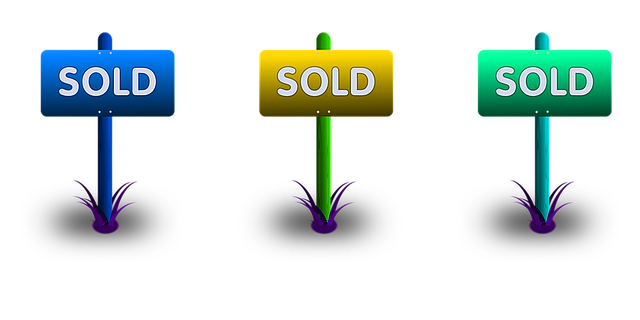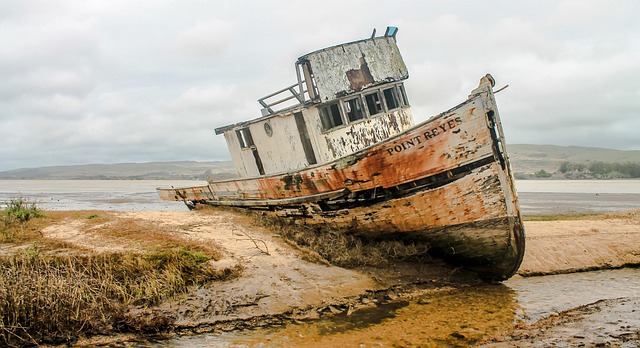Smoke damage from fires poses significant challenges for homeowners aiming to sell in competitive California markets. Prompt action is crucial to mitigate structural and health risks associated with smoke molecules. A thorough assessment by inspectors is vital to identify visible and hidden damage, including odors and contaminant levels. Remediation involves a meticulous process of removal, isolation, cleaning, restoration, odor elimination, and final inspection. Legal considerations include building code compliance, disclosure requirements, and insurance policy review. Preventive measures like regular maintenance, proper ventilation, and fire safety planning can reduce potential losses and enhance resale value for those selling fire-damaged properties in California.
Smoke damage can leave your home in disarray, but understanding and swift action are key to restoration. This comprehensive guide navigates the process of smoke damage remediation, specifically tailored to properties in California. From assessing immediate impacts and scoping the damage to a step-by-step restoration process, we provide expert insights. Additionally, legal and financial considerations for selling a fire-damaged property in CA are explored, alongside preventive measures to safeguard your home from future smoke damage.
- Understanding Smoke Damage: The Immediate Impact on Your Home
- Assessing the Scope: What to Look for in a Fire-Damaged House in California
- Remediation Process: Step-by-Step Guide to Restoring Your Property
- Legal and Financial Considerations: Selling a Fire-Damaged Property in CA
- Preventive Measures: Protecting Your Home from Future Smoke Damage
Understanding Smoke Damage: The Immediate Impact on Your Home

When a fire occurs, smoke damage can be just as devastating as the flames themselves. Even after the fire is extinguished, smoke molecules continue to linger in the air and settle on surfaces within your home. This invisible menace can leave behind unpleasant odors, stains, and even pose health risks for occupants. In California, where real estate markets are competitive, understanding the immediate impact of smoke damage is crucial if you’re looking to sell a fire-damaged house.
The effects of smoke are multifaceted. It can discolor walls, ceilings, and furniture, leaving unsightly marks that may require extensive cleaning or replacement. Smoke also contributes to the deterioration of building materials, including wood, drywall, and insulation, which can compromise the structural integrity of your home. Moreover, certain chemicals present in fire smoke can trigger respiratory issues or allergies for those living in the affected area, making it a health hazard that needs to be addressed promptly.
Assessing the Scope: What to Look for in a Fire-Damaged House in California

After a fire, assessing the damage is crucial before considering options like selling a fire-damaged house in California. Inspectors should look for visible signs of smoke and fire, including charred walls, stained ceilings, and odours from soot. Check for structural integrity issues, as even non-visible areas may be compromised. Look under carpets and within walls for hidden damage caused by water used to extinguish the fire during remediation.
Additionally, assess the extent of odour and contaminant levels. Soot and smoke residues can leave behind harmful particles and gases that require professional cleaning and decontamination. A thorough assessment is key to determining the feasibility of repairs and whether selling a fire-damaged house in California is the best course of action.
Remediation Process: Step-by-Step Guide to Restoring Your Property

Smoke damage remediation is a critical process that requires expertise and precision, especially for those considering selling a fire-damaged house in California. The goal is to restore your property to its pre-fire condition, minimizing long-term effects on both structure and belongings. Here’s a step-by-step guide:
1. Assess the Damage: Begin by thoroughly inspecting the affected areas. Identify smoke stains, odour remnants, and structural integrity issues. This step is crucial for planning an effective remediation strategy tailored to your specific needs.
2. Remove Contaminated Items: Immediately take out all fire-damaged belongings and clothing, placing them in sealed containers for safe disposal or cleaning. Ensure proper handling to prevent further contamination of unharmed areas.
3. Encase the Area: Use plastic sheeting and tape to isolate the damaged zone from the rest of your home, preventing smoke particles from spreading and ensuring remediation workers have a contained space to work in.
4. Clean Surfaces and Structure: Employ professional cleaning solutions designed for smoke removal. These solutions effectively break down and eliminate smoke residues on surfaces, walls, ceilings, and even structural materials.
5. Restore and Repair: Depending on the extent of damage, rebuild or repair affected areas. This step might involve replacing drywall, repainting, and restoring wood or metal work to its original condition.
6. Odour Removal: Smoke leaves a distinct odour that can linger for months. Use odour neutralizers and air purification systems to eliminate this unwanted scent, ensuring a fresh environment when the property is ready for sale.
7. Final Inspection: After remediation, conduct a comprehensive inspection to verify that all areas have been thoroughly cleaned and restored, adhering to California’s strict standards for selling fire-damaged homes.
Legal and Financial Considerations: Selling a Fire-Damaged Property in CA

When it comes to selling a fire-damaged property in California, there are several legal and financial considerations to keep in mind. The first step is to assess any structural damage and ensure that the house meets safety standards set by local building codes. This might involve extensive repairs or even demolition, which can significantly impact the cost of selling. Homeowners should consult with professionals experienced in smoke damage remediation and rebuilding to get accurate estimates.
From a legal perspective, California has specific regulations regarding the disclosure of property damage to potential buyers. Sellers must disclose any known issues, including fire damage, in good faith. Failure to do so could lead to future legal complications. Additionally, insurance policies play a crucial role. Homeowners should review their coverage and understand what is covered and what might be considered a deductible or an excluded loss when it comes to selling the property.
Preventive Measures: Protecting Your Home from Future Smoke Damage

Protecting your home from future smoke damage is an essential step, especially in California where wildfires are a common occurrence. Regular maintenance and upgrades can significantly reduce potential losses. Install smoke detectors on every level of your home and test them monthly to ensure they’re functional. Keep fire extinguishers readily available and up-to-date; know how to use them effectively.
Additionally, create a fire escape plan with your family and practice it regularly. Ensure proper ventilation in your kitchen and other areas prone to smoke buildup. Keep your home free from debris and easily flammable materials. If you’re considering selling a fire-damaged house in California, taking these preventive measures can enhance its resale value and appeal to potential buyers who prioritize safety and preparation against future natural disasters.
Smoke damage can be devastating, but with proper understanding and remediation, homeowners in California can effectively restore their properties. By assessing the scope of damage, following a structured remediation process, considering legal aspects, and taking preventive measures, selling a fire-damaged house in California becomes a viable option. Remember, quick action is key to minimizing loss and maximizing property value retention.






